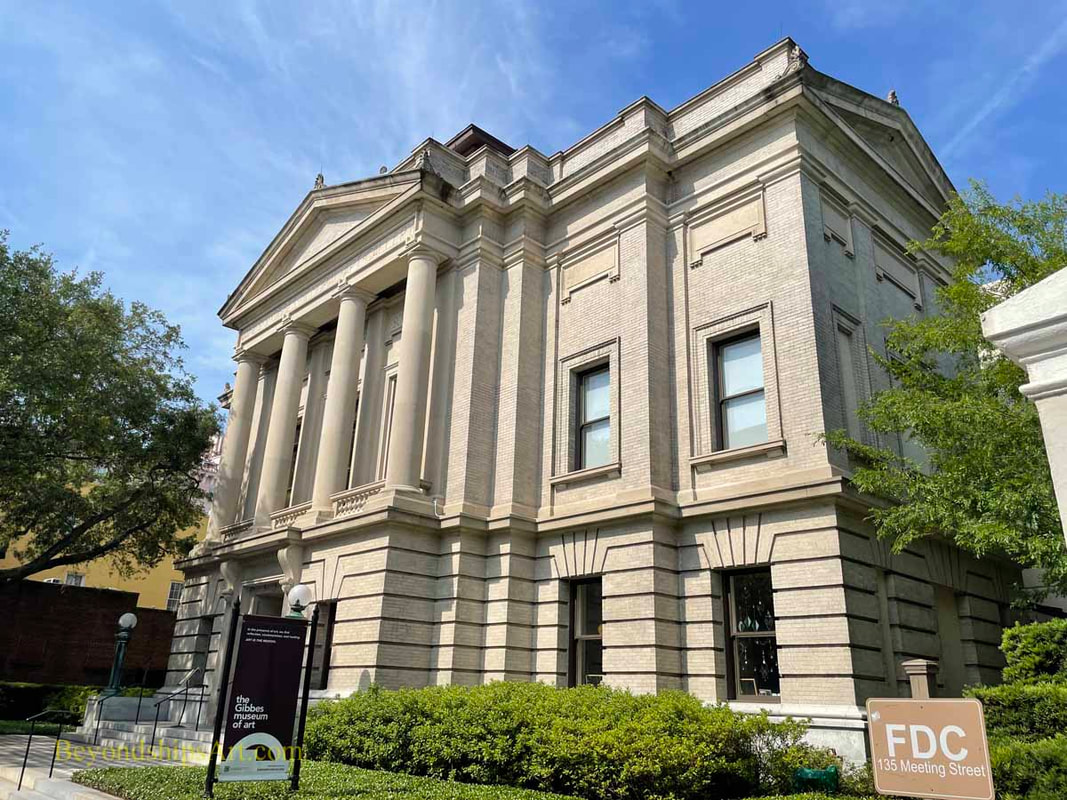
The Gibbes Art Museum is located in the heart of Charleston's Historic District on Meeting Street. Its impressive century-old building is home to some 10,000 works of art including paintings, furniture and miniatures.
The museum is able to trace its roots to the Carolina Art Association, which was established in 1858. Charleston, which had been a very rich city prior to the American Civil War, experienced a major economic decline in the period following the war. However, in 1899, James Shoolbred Gibbes bequeathed $100,000 to the Association in order to construct a museum building. Following a number of legal challenges to the bequest, work began on the new building in 1903. Architect Frank Pierce Milburn produced a beaux arts style design and construction was completed in 1905. The building underwent two years of renovation ending in 2016. While the renovation was based upon the original plans for the building, it also served to modernize it so as to be a contemporary museum venue. As a result, the ground floor has classrooms, artist studios, lecture and event spaces, a café, a museum store and a reception area that opens out onto a green space at the rear of the building. The upper floors are devoted primarily to galleries. The Gibbes' permanent collection focuses on American art with an emphasis on the art relating to the American South and Charleston including the area's enslaved people. The museum is strong in early American portraiture including works by Samuel Morse, Thomas Sully, and Benjamin West. There is also a good collection of American miniatures from the same era. However, the collection extends further into the 20th and 21st centuries. There is a particularly intriguing room with Impressionist and Realist works by Childe Hassam, Robert Henri, Edmund Charles Tarbell and James McNeill Whistler. In addition to exhibitions of its permanent collection, the Gibbes hosts six to eight special exhibitions a year. These can be thematic presentations dealing with a particular issue, works from a specific collection or works from a particular artist or group of artists. The museum describes them as “designed as an experimental platform for engaging with art in new and exciting ways and challenging established interpretations.” For more information on visiting, see the Gibbes' website. |
Above: "Major General Thomas Pinckney" by Samuel F.B. Morse.
Below left: "April" by Childe Hassam. Below: The exterior of the Gibbes Art Museum. |
|
|
|
Places to see art - - Charleston, Rhode Island - - Gibbes Art Museum



